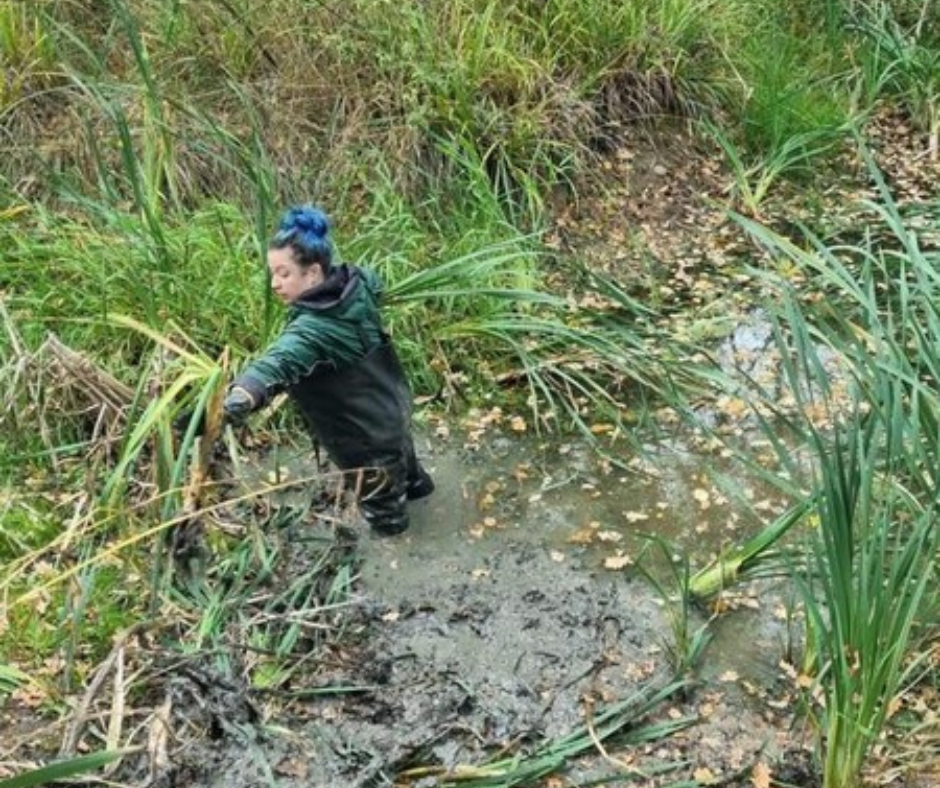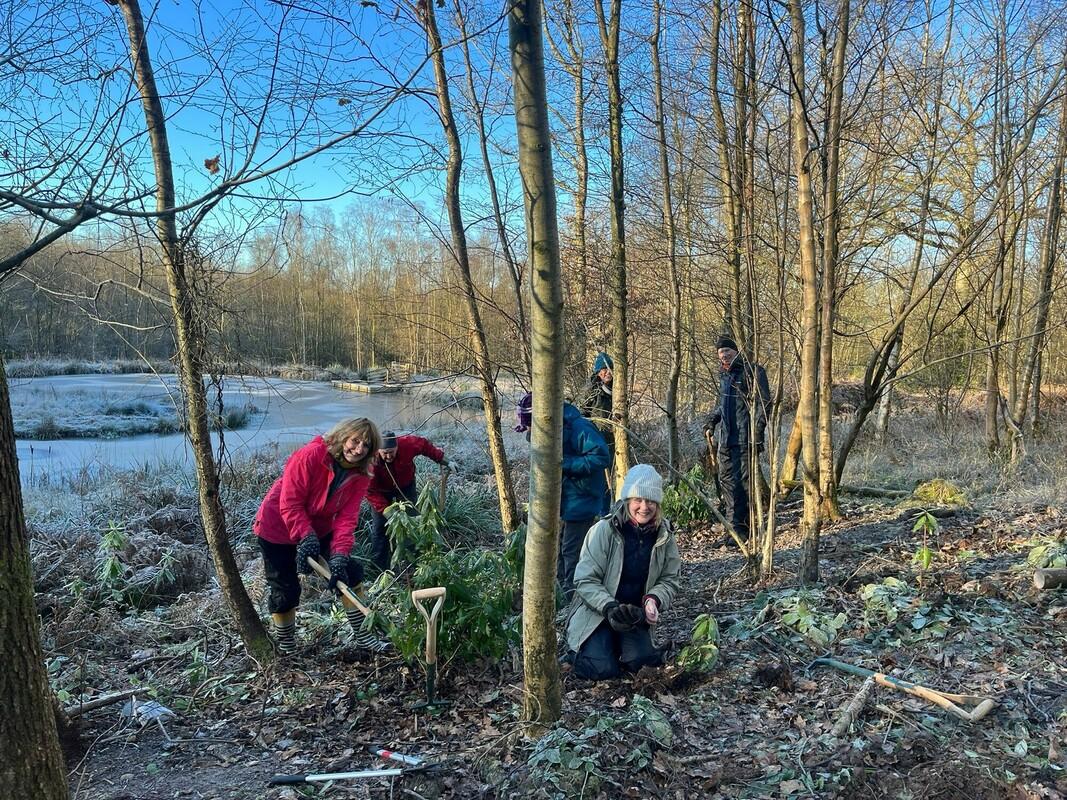
Braving winter in the Forest: a survival guide for the season ahead
As the days become darker and colder, our hard-working Forest Team and volunteers need to prepare for the harsh elements that they will face in the coming months as they continue working towards the charity’s mission to create a 30,000-acre Forest to benefit the environment, wildlife and people. Biodiversity Officer Tasha shares her survival guide for getting through the challenging winter months out in the Forest.

Survival guide 101
Mimicking wildlife – a change in behaviour
Much like the wildlife of the Forest, our work behaviours change throughout the year as we do tasks that are driven by the cycle of nature. The work we conduct in the summer months, sees the biodiversity team buzzing around surveying the wildflower meadows, searching the canopy for elusive arboreal butterflies, and hunting for bats as the evening arrives. However, unlike pollinators, it comes as relief in the winter months when we can stop taking antihistamine for hay fever!
In the winter, however, when most pollinators become dormant, we face our most physical time of year as our focus shifts to woodland creation and conservation management.
Badgers' social interactions with each other help them to survive; family groups teach their young to collect bedding material deep underground to help get through the harshest weather – it’s about teamwork for badgers in the winter. Although, our social interactions look a little different, we also heavily rely on teamwork. We work hard together with our fantastic volunteers, teaching practical conservation methods and techniques, enabling us to take care of our wonderful Forest, so it too can survive and thrive.

Keeping warm
The shorter colder days mean we need to be comfortable and safe in our attire to complete tasks. During the winter months we swap out our caps, suncream, and insect repellent for a lot of warm layers, woolly hats, and waterproofs.
Though, even on a particularly bitterly cold day while battling through dense scrub, you do tend to warm up quite quickly - if it isn’t raining that is. Productivity is higher when the volunteers and I are not being weighed down by the heavy rain and slowed by the mud beneath our feet. Although, no matter the weather, throughout winter, thermal wellies are always a must!
A change in appetite
For me and many others in the team, sandwiches and salads are swapped for soups, pastas, and broths to keep us warm. Some of us bring flasks of hot coffee out into the field to help thaw out any chills.
Here’s one of my favourite winter warmers:
Tomato and chorizo soup
Ingredients
-
50g chorizo chopped into small pieces
-
1 large onion diced
-
2 cloves of garlic crushed
-
2 400g tins of chopped tomatoes
-
½ litre vegetable stock
-
1 tablespoon corn flour
-
2 tablespoon cold water
-
1 tablespoon fresh basil chopped
Method
-
Add the chopped chorizo pieces to a hot large pan; stir. Remove chorizo from the pan with a slotted spoon once it begins to brown but before it goes crispy and set it aside.
-
Add the onion and garlic, stirring into the chorizo juices. Once softened, add the tomatoes and vegetable stock to the pan, bring to the boil, then turn down the heat and simmer for 15 minutes.
-
Blitz the soup mixture with a food processor or blender and return to the pan.
-
Mix the corn flour with the water to form a paste and stir that into the soup to help it thicken. Add the chorizo back to the pan.
-
Simmer the soup for a further 15 minutes, stir in the basil, season to taste.
In short, for us surviving in the winter is all about keeping warm, active, social and fed right! You can support our conservation work and protect the future of our native wildlife by becoming a Friend of the Forest today.



